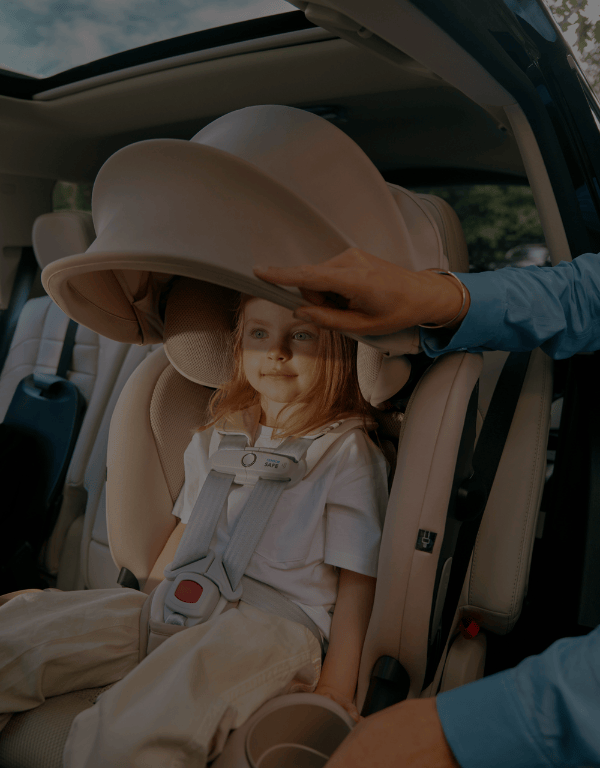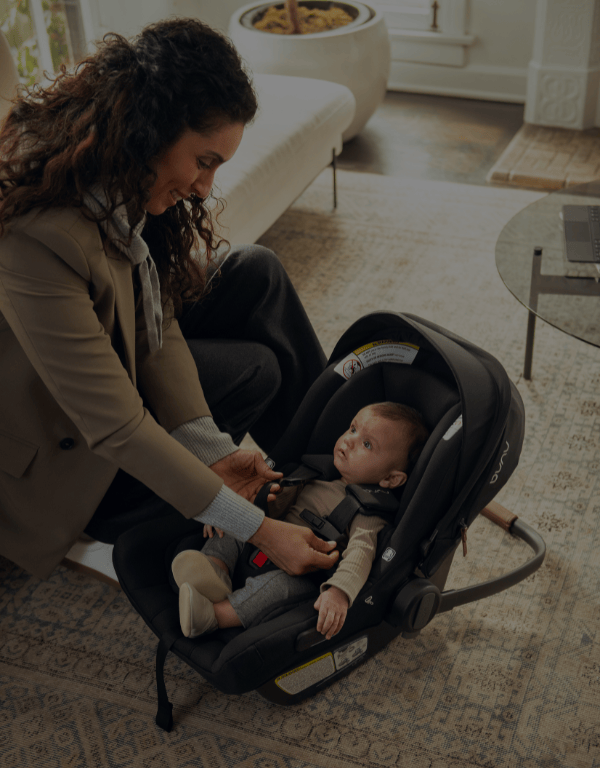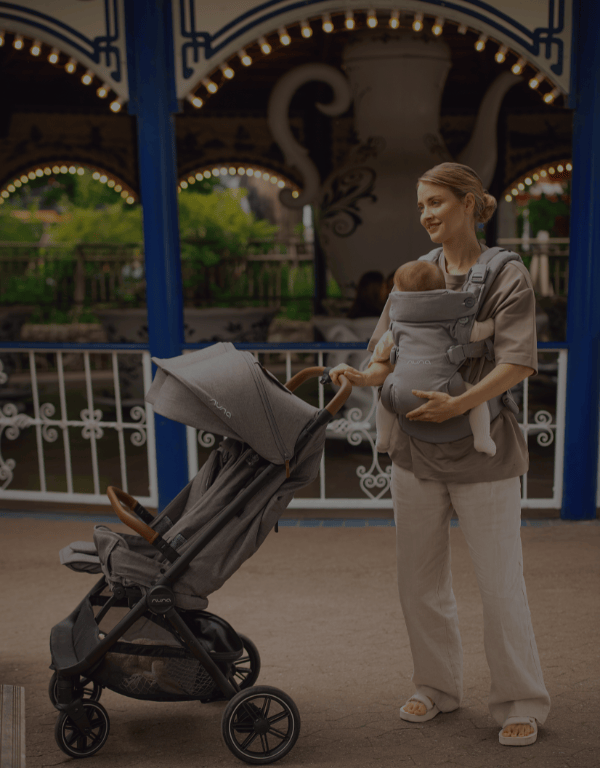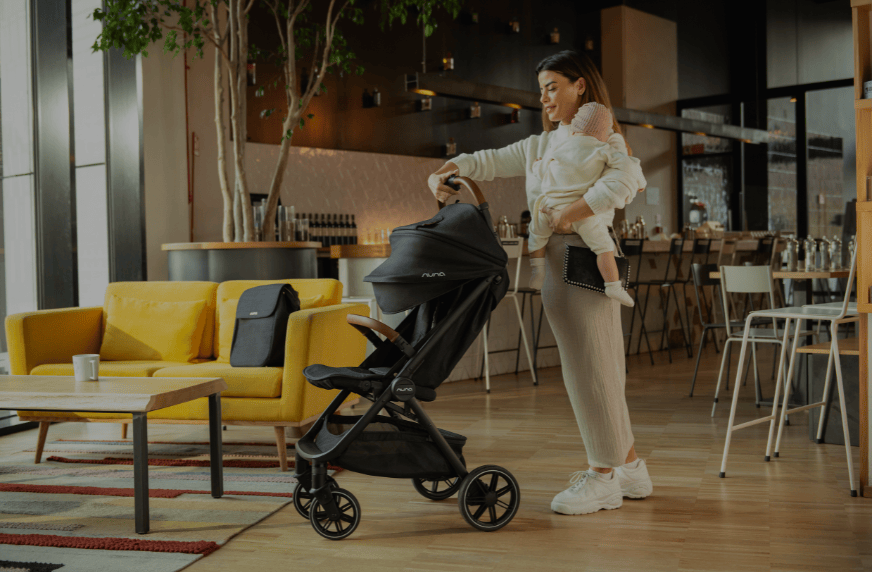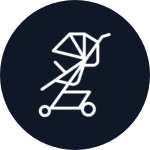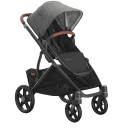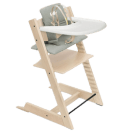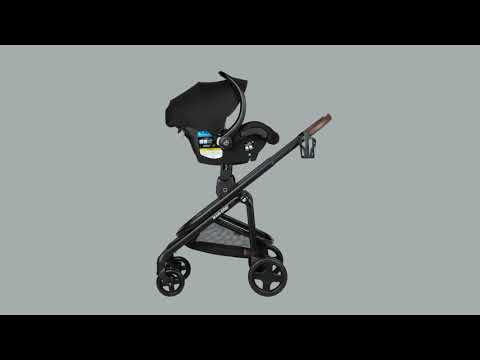
Changing a diaper is one of those fundamental parenting tasks that can feel intimidating at first. But don’t worry—with a little practice (and you’ll get plenty), you’ll be a diaper-changing pro in no time! Whether you’re a brand-new parent or just need a refresher, we’ve got you covered with this simple, step-by-step guide. We’ll walk you through everything you need to know, from gathering supplies to the final cleanup.
In this guide, you’ll find helpful tips and tricks to make diaper changes easier and more efficient. We’ll cover how to prepare your changing area, clean your baby properly, and handle those inevitable diaper messes confidently. Plus, we’ll share some practical advice for common challenges like dealing with active, on-the-go toddlers and preventing diaper rashes.
What Do You Need to Change a Diaper?
Before you begin, having everything you need within arm’s reach is important. Here are your diaper-changing essentials
- Diapers
- Wipes
- Diaper cream or ointment
- Changing pad
- Soft cloth
- Hand sanitizer
- Extra clothes
- Plastic bag or diaper pail
A pro parent tip on diaper wipes: Not every diaper change requires wipes. According to the American Academy of Pediatrics (AAP), changing a pee-pee diaper is okay without wipes. Pee is rarely irritating to your baby’s skin, and diapers are super absorbent, limiting the amount of urine coming in contact with your baby’s bum in the first place. It’s a win-win for your wallet and the planet.
Where to Change Your Baby
Where you set up your baby changing station depends on your family’s preferences, but convenience and ease are essential. Some families create a changing station in the nursery (or their room if they are still co-rooming). No matter the location, keep your diapering essentials corralled in an organizer or bin, and you can move it from room to room.
You know your living space best, so consider what will create the most convenience and flow. If your home has two levels, think about having a main changing station in the nursery—or a nursery nook within your room—and a smaller setup downstairs. Remember, you’ll likely be changing your baby into their daytime clothes and PJs at this station, too, so keep that in mind when selecting a location.
Read more: How to Set Up a Diaper Changing Station
Step-by-Step Diaper Changing Process
Sure, changing a diaper seems pretty straightforward—and it mostly is!—but a fussy baby and a hefty dose of sleep deprivation can make it feel complicated. Breaking it down into simple steps can make the process smoother:
1. Lay Your Baby Down
First, find a flat surface to lay your baby on. A changing table with safety straps is ideal, but a clean floor or bed with a changing pad works, too. Always keep one hand on your baby to prevent any unexpected wiggles and rolls.
2. Unfasten the Dirty Diaper
Gently open the tabs of the dirty diaper. If your baby is particularly wiggly, try talking or singing to them to keep them calm and distracted. Fold the tabs back onto themselves to avoid sticking them to your baby’s skin.
3. Clean Your Baby
Using baby wipes, clean the diaper area thoroughly. Always wipe from front to back, especially for girls, to prevent infections. Be gentle on your baby’s sensitive skin, and clean all the little folds and creases.
4. Remove the Dirty Diaper
Lift your baby’s legs by the ankles with one hand and slide the dirty diaper out with the other. If the diaper is extra messy, you can use the front part of the diaper to wipe off any excess before removing it completely. Roll it up, secure it with the tabs, and set it aside for disposal.
5. Dry Your Baby
If your little one is still wet after wiping, use a soft cloth to dry them completely. It may seem unnecessary, but it goes a long way toward preventing diaper rash.
6. Apply Diaper Cream or Ointment
If your baby has a rash or you want to prevent one, now is the time to apply diaper cream. Use a small amount and spread it evenly over the clean, dry skin. (Taking a moment to highlight dry skin: Cream or ointment applied to damp skin won’t be as effective.) Creams and balms create a barrier that helps protect tiny tushes against moisture and irritation.
7. Place the Clean Diaper
Slide a fresh diaper under your baby’s bottom. Make sure it’s centered and that the back part is higher than the front to avoid leaks. If your baby is a newborn, fold down the front of the diaper to keep the umbilical stump exposed to air and prevent irritation.
8. Fasten the Diaper
Bring the front of the diaper up and over your baby’s tummy. Pull the tabs around and fasten them snugly but not too tight. You should be able to slip two fingers between the diaper and your baby’s waist. Check that the leg ruffles are pulled out to prevent leaks.
9. Dress Your Baby
Put your baby’s clothes back on and give them a cuddle. (Maybe they’ll figure out diaper changing isn’t so bad.)
10. Dispose of the Dirty Diaper
Place the rolled-up dirty diaper into a plastic bag or diaper pail to contain any odors and keep your home fresh. Make sure it is securely closed to prevent any leaks.
11. Wash Your Hands
Always wash your hands thoroughly with soap and water after changing a diaper to maintain good hygiene and prevent the spread of germs. If you’re on the go and don’t have access to a sink, use hand sanitizer temporarily.
How to Change a Girl’s Diaper
Always wipe from front to back when changing your baby girl’s diaper to prevent urinary tract infections. Be thorough but gentle, cleaning between all the folds of her skin.
How to Change a Boy’s Diaper
Fun fact: Baby boys are known for peeing as soon as their diaper comes off. Keep a towel or tissue handy to prevent any unexpected sprays. When putting on a fresh diaper, point his penis downwards before pulling up the diaper and securing the tabs to avoid leaks.
Tips for Changing Newborns
You might feel nervous about changing a tiny, delicate newborn, but here’s some good news: They don’t squirm or resist much at this age. Here are a couple of helpful tips for changing a newborn’s diaper:
- Be Careful of the Umbilical Area: If your newborn’s umbilical cord stump hasn’t fallen off yet, fold down the top of the diaper to sit below the belly button, keeping the area clean and comfortable. Many newborn diapers are designed with a special dip that contours around the stump.
- Follow Circumcision Care Instructions: If your newborn has been circumcised, follow your doctor’s instructions for diaper changes. Generally, you’ll need to keep the wound clean and lubricated until it heals. This usually involves replacing the gauze and reapplying ointment during each diaper change.
- Manage Meconium: Your baby’s first poop is meconium, a black, sticky substance that’s harder to wipe off. Right after your baby’s birth, apply a thin layer of diaper cream to make clean-up a breeze.
- Warm the Wipe: Hold the wipe in your hand for a few seconds to warm it up before using it on your baby. It can make a big difference during overnight changes when you want your little one to stay as drowsy as possible.
- Use a Double Diaper Hack: Before starting the change, place a clean diaper under the one your baby is wearing. After cleaning your baby and removing the dirty diaper, the fresh one is already in place and ready to be fastened.
Tips for Changing Toddlers
You might get lucky—some toddlers remain cooperative and lie on their changing table, making diaper changes easy on you. But others aren’t as keen on staying still! If you have an active toddler who resists diaper changes, here are some tips to make the process smoother.
- So Long, Changing Table: Getting a heavy, squirmy toddler up onto a changing table (or dresser top) isn’t fun for anyone. Take your changing pad to the floor and do your diaper changes there.
- Change Diaper Styles: Switching from tab-front diapers to a pull-up style makes the changing process quicker. Pull-up diapers can be torn apart at the sides for a change, just like regular diapers. They are also convenient for standing changes when wet and can be pulled up like underwear (a sneaky precursor to set the stage for potty training).
- Choices: Toddlers are testing boundaries and becoming more independent, so they appreciate having a say. By involving them in the process, you can make diaper changes less aggravating. Ask your little one questions like, “Do you want to get a new diaper lying down or standing up?” “Would you like a diaper change now or after one more minute of playtime?”
- Encourage Independent Dressing: One skill your kiddo needs to master before potty training is pulling their undies and pants on and off themselves. Give your toddler a chance to practice!
Diaper Changing FAQs
How Often Should You Change Your Baby’s Diaper?
Because of frequent feedings, newborns need a diaper change every 2-3 hours, or about 10-12 times a day. As your baby grows, you can change their diaper every 3-4 hours or when it’s wet or soiled. Using extra absorbent overnight diapers at night can help reduce the need for changes. Always watch for signs like fussiness, a heavy diaper, or a noticeable smell to know when it’s time for a fresh pair.
What Should You Do If Your Baby Has a Diaper Rash?
If your baby has a diaper rash, here’s how to help them feel better:
- Keep It Dry: Make sure your baby’s skin is completely dry before putting on a new diaper. Let your baby go diaper-free to air out the area for a few minutes.
- Apply Diaper Ointment: Use a barrier cream or zinc oxide ointment at each diaper change to protect the skin, soothe angry tushes, and promote healing.
- Frequent Changes: Change diapers more often to keep the area clean and dry.
- Avoid Irritants: Use gentle, fragrance-free wipes and diapers. If you suspect a reaction, try switching brands.
If the rash doesn’t improve or seems severe, be sure to consult your pediatrician for advice.
How Long Can Your Baby Stay in a Poopy Diaper?
It’s best to change a poopy diaper as soon as possible to prevent irritation and diaper rash. While you don’t need to drop everything ASAP mid-task, you should change your little one within 5-10 minutes after learning it’s soiled, max. Leaving your baby in a dirty diaper for too long can cause discomfort, skin problems, and fussiness.
Do You Ever Need to Wake Up Your Baby for a Diaper Change?
No parent wants to wake a sleeping baby, and we’ve got great news: Generally, you don’t need to wake your baby for a diaper change. If your little one is snoozing peacefully and only has a wet diaper, waiting until they wake up is usually okay. However, if they have a poopy diaper, it’s best to change it promptly to prevent diaper rash. Extra absorbent overnight diapers can help your baby stay comfortable and reduce the need for nighttime changes.
Should You Use Baby Powder During Diaper Changes?
No, you should not. The AAP warns against using baby powder, especially those containing talc, as they can cause breathing problems if inhaled. Additionally, the American Cancer Society says there is a potential link between cancer and continued exposure to talc. What about baby powders made with cornstarch? Avoid them, as well. Cornstarch-based powders can cause an overgrowth of yeast and irritate your baby’s skin. If you’re worried about diaper rash, make sure your baby is 100% dry after changing, and use a cream or ointment instead.
How Can You Be Sure Your Baby’s Diaper Is the Right Size?
The wrong diaper size can lead to blowouts and leaks, and diaper fit and sizing can differ between brands. Start with the brand’s size chart to find the right size for your baby. You should be able to fasten the tabs around the waist without any slack or excessive overlap. The diaper’s leg holes should fit snugly around your baby’s thighs without gaping or leaving marks.
What’s the Difference Between Diaper Cream and Ointment?
Ointments are particularly effective for treating diaper rash, and if your baby has a rash, you should apply one at every change. On the other hand, diaper rash creams can be used preventively or to soothe irritated skin before a full rash develops.
Diaper Cream
- Texture: Lighter and less greasy.
- Purpose: Ideal for daily preventive care and soothing minor irritation before a full rash develops.
- Application: Easy to spread and absorbs quickly into the skin.
- Common Ingredients: Often contains zinc oxide, which helps protect the skin and reduce irritation.
Diaper Ointment
- Texture: Thicker and more protective, creating a strong barrier on the skin.
- Purpose: Best for treating existing diaper rashes and providing robust protection against moisture and irritants.
- Application: Takes longer to absorb and can be a bit greasier, but offers longer-lasting protection.
- Common Ingredients: Typically contains petrolatum or lanolin, which are excellent for creating a moisture barrier.
If your baby has extra sensitive skin, consider applying diaper cream at every change. Applying it at bedtime is also beneficial to protect your baby’s skin during longer stretches between changes.
Are There Any Eco-Friendly Diaper Options?
If you’re interested in reducing your family’s environmental impact, you have a few eco-friendly diapering options:
- Cloth Diapers: These aren’t your Bubbe’s cloth diapers! Modern cloth diapers are reusable, come in cute patterns, and are more user-friendly than ever (translation: no pins). They require a bit more laundry but are easy on the environment and your baby’s skin.
- Eco-friendly Disposables: Many brands now offer biodegradable or compostable disposable diapers made from sustainable materials. These are a great option if you want the convenience of disposables with a smaller environmental footprint.
- Diaper Services: Some areas have diaper services that deliver clean cloth diapers and pick up dirty ones. It’s a convenient way to use cloth diapers without the hassle of laundry.
Why Is Your Baby’s Diaper Always Leaking?
If your baby’s diaper constantly leaks, it might be time to move up to the next size. It could also mean that your brand isn’t the best fit for your baby’s shape. Ensure the leg ruffles are flipped out, the tabs are fastened snugly around your baby’s lower belly to prevent leaks, and if you have a boy, make sure his penis is aimed down into the diaper.
Do You Need a Changing Table?
A changing table is not a must-have nursery essential; it’s a matter of personal preference. But what you do need is a changing pad—they’re portable, easy to clean, and turn almost any spot into a comfy and sanitary place for a diaper change.
Finding What’s Right for You
Albee Baby is the oldest family-owned specialty baby shop in the US. We pride ourselves on providing our customers with the best assortment of baby products anywhere, at fair prices, always. We’re committed to being an inclusive resource for parents and hope you feel empowered to find the right baby gear for your family. Still have questions? Feel free to contact our baby gear experts at 877.692.5233 or info@albeebaby.com.
 Car Seats
Car Seats
 Strollers
Strollers
 Travel Cribs & Playards
Travel Cribs & Playards
 High Chairs
High Chairs
 Cribs & Nursery
Cribs & Nursery
 Health & Safety
Health & Safety
 Gift Shop
Gift Shop
